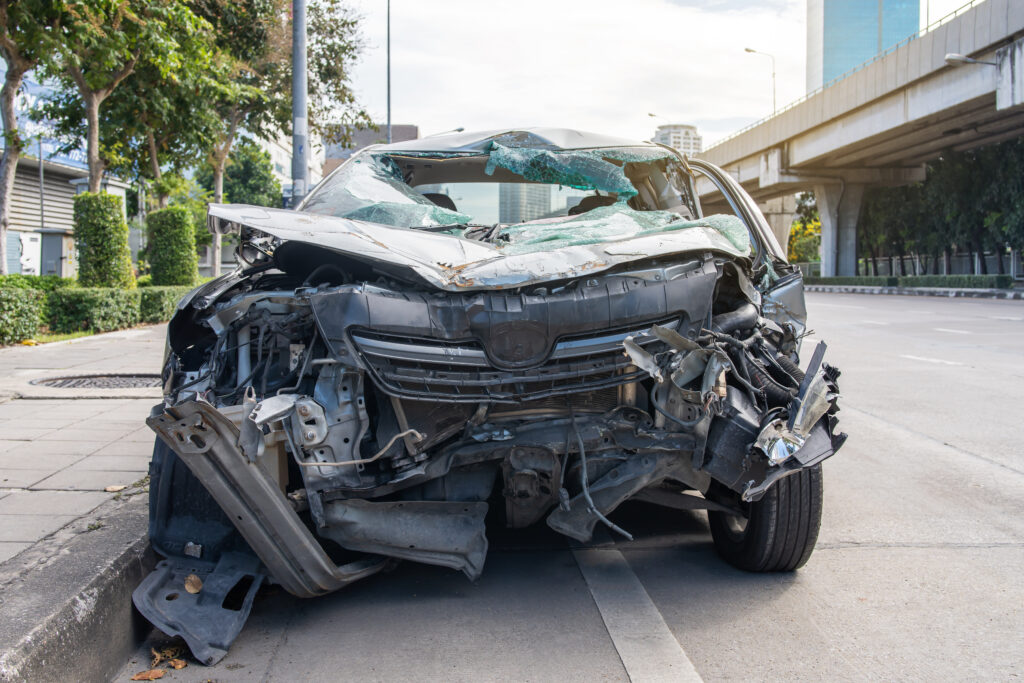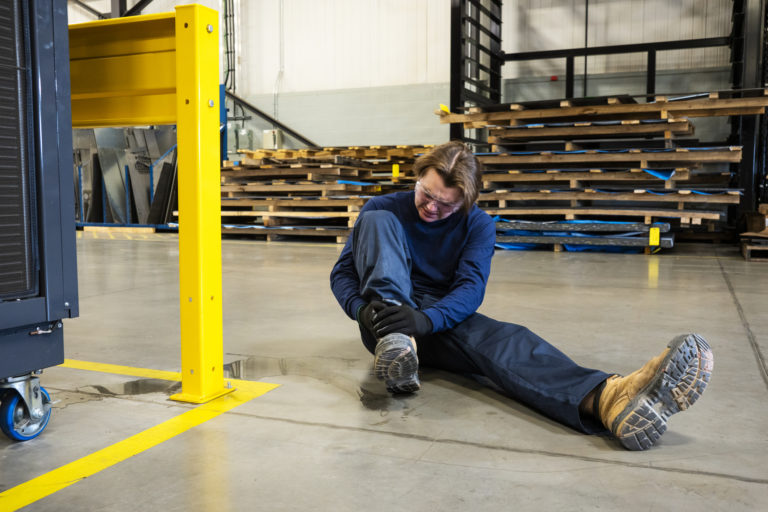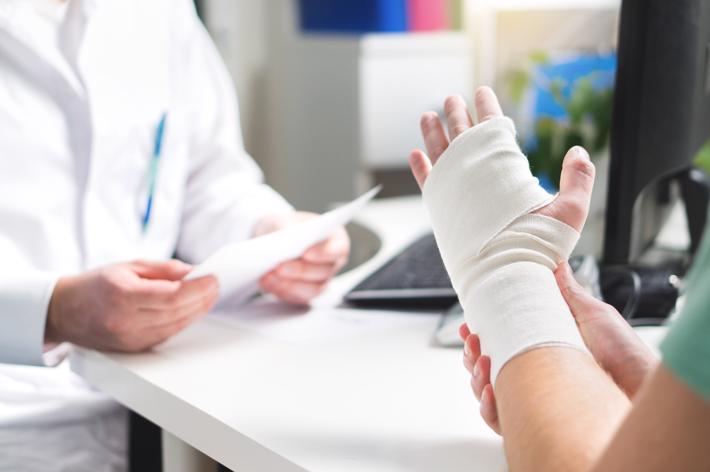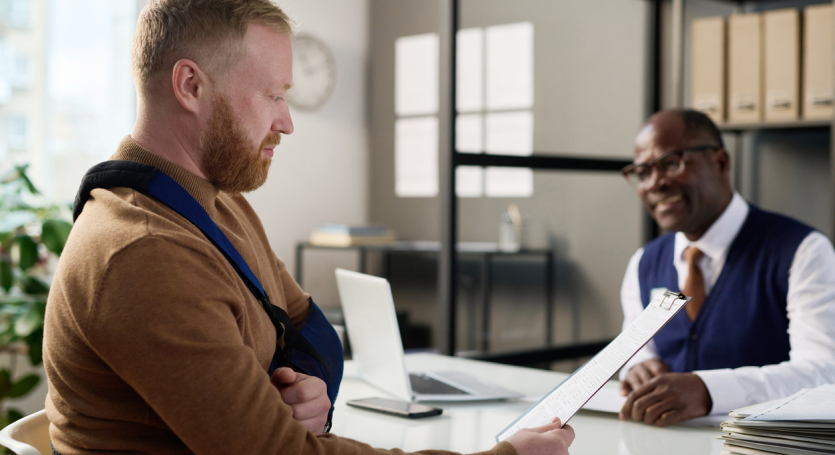I Caused a Car Accident
If you’ve ever caused a car accident, you know that it can be a terrifying and stressful experience. The first thing you should do is take a deep breath and try to remain calm. Then, follow these steps to ensure that you’re taking the necessary steps to protect yourself and the other parties involved:
What to Do After Causing a Car Accident
1. **Pull Over and Stay at the Accident Scene**
After an accident, it’s crucial to pull over to the side of the road and stay at the scene. Leaving the scene of an accident can be considered a hit-and-run, which is a serious offense. Even if you feel shaken up or disoriented, it’s important to remain calm and collect your wits. Turn on your hazard lights to alert other drivers and make sure you’re in a safe location.
Next, check if anyone is injured. If you or anyone else involved in the accident requires medical attention, call 911 immediately. Don’t move injured persons unless it’s absolutely necessary to protect them from further harm.
Once you’ve ensured everyone’s safety, you should exchange information with the other driver(s) involved in the accident. This includes your name, address, phone number, insurance information, and license number. Additionally, take down the make, model, and license plate number of the other vehicle(s) involved.
2. **Call the Police**
In most cases, you should call the police after a car accident. The police will create a report of the accident, which can be helpful if you need to file an insurance claim or if there’s a dispute about who was at fault. The police can also help to direct traffic and ensure that the scene is safe.
However, there are some exceptions to this rule. For example, if there are no injuries and the damage is minor, you may not need to call the police. You can also choose not to call the police if you and the other driver(s) involved agree on who was at fault and there are no disputes about the damage.
3. **Take Photos and Document the Scene**
If possible, take pictures of the accident scene. This will help to document the damage and provide evidence for your insurance claim. Be sure to take pictures of the damage to both vehicles, as well as the surrounding area. You should also take pictures of any injuries that you or anyone else sustained.
In addition to taking pictures, you should also write down a brief description of the accident. Include details such as the date, time, and location of the accident, as well as the names and contact information for any witnesses. This information will be helpful if you need to file an insurance claim or if you’re involved in a legal dispute.
4. **File an Insurance Claim**
Once you’ve taken care of the immediate aftermath of the accident, you should file an insurance claim. Your insurance company will need to know about the accident so that they can process your claim and determine how much you’re entitled to receive.
When you file your claim, you’ll need to provide your insurance company with the following information:
- Your name, address, and phone number
- Your policy number
- The date, time, and location of the accident
- The names and contact information for the other driver(s) involved in the accident
- A description of the accident and the damage to your vehicle
- Photos of the accident scene
- A copy of the police report (if there is one)
5. **Hire an Attorney (Optional)**
If you’ve been seriously injured in a car accident, or if there’s a dispute about who was at fault, you may want to consider hiring an attorney. An attorney can help you to protect your rights and get you the compensation that you deserve.
I Caused a Car Accident: What to Do Next
Oh no! You’ve just been involved in a car accident. It’s a scary and stressful situation, but it’s important to stay calm and collected. Your first priority should be ensuring the safety of yourself and others involved.
2. Stay Calm and Ensure Safety
In the aftermath of a car accident, it’s natural to feel shaken up. However, it’s crucial to remain as calm as possible and assess the situation with a clear mind. Pull your vehicle over to the side of the road if possible, and activate your hazard lights to warn other drivers of the accident. Once your car is stationary, take a moment to check yourself and your passengers for any injuries. If anyone is hurt, call 911 immediately.
Once you’re sure that everyone is safe, it’s time to gather information about the accident. Exchange contact information with the other driver(s) involved, including names, phone numbers, insurance companies, and policy numbers. You should also take photos of the accident scene, including damage to vehicles, road conditions, and any visible injuries.
It’s important to be cooperative with the police when they arrive. Provide them with an accurate account of what happened and answer their questions honestly. The police report will be an important record of the accident, so it’s crucial to be truthful in your statements.
After the police have left, you may want to speak with an attorney. An attorney can help you understand your rights and options, and they can assist you in filing a claim with your insurance company.
I Caused a Car Accident: What Should I Do Next?
If you’re in the unfortunate position of having caused a car accident, it’s crucial to take the right steps to protect yourself and ensure the well-being of others. Here are some essential steps to follow:
1. Ensure Safety
Firstly, pull over to a safe location if possible. Then, check for any injuries to yourself, your passengers, and any other individuals involved. If there are injuries, call for medical assistance immediately. Furthermore, if the accident has resulted in significant property damage, stay at the scene and wait for the authorities to arrive.
2. Call the Police and Exchange Information
It’s imperative to report the accident to the police and obtain a police report. This document will serve as an official record of the incident and can help with insurance claims and legal proceedings. Moreover, exchange crucial information with the other driver(s) involved, such as names, addresses, insurance details, and license numbers. Failing to do so could have legal implications.
3. Gather Evidence
Documenting the accident scene thoroughly is crucial. Take photographs of the damage to all vehicles involved, skid marks, and any other relevant details. Additionally, obtain witness statements from anyone who saw the accident. These pieces of evidence can provide valuable information to insurance companies and potentially strengthen your case in any legal proceedings.
Consider speaking to an attorney who specializes in car accidents. They can guide you through the legal complexities, help you understand your rights, and advocate for your best interests. Don’t hesitate to seek professional advice if you have any uncertainties or concerns about your situation.
Remember, staying calm, being responsible, and cooperating with the authorities and insurance companies will go a long way in mitigating the aftermath of the accident. It’s natural to feel shaken up, but handling the situation with composure and taking the necessary steps will help you navigate this challenging time more effectively.
I Caused a Car Accident: What Should I Do?
Panicking after causing a car accident is natural, but it is critical to remain calm and take appropriate steps to ensure everyone’s safety and well-being. Here are some steps to follow if you find yourself in this situation:
1. Ensure Safety
First and foremost, prioritize the safety of yourself, passengers, and others involved in the accident. If there are any injuries, call for medical help immediately. Move vehicles to a safe location, if possible, to prevent further incidents. Turn on your hazard lights to alert other drivers.
2. Exchange Information
Once the immediate danger has subsided, exchange information with the other driver(s) involved. This includes your name, contact details, insurance information, license numbers, and vehicle make and model. Be polite and respectful, even if tensions are high. It’s essential to accurately document the details for insurance purposes.
3. Gather Evidence
Take photos of the damage to all vehicles involved, including close-ups of any injuries. Capture the scene of the accident, such as skid marks or road conditions. Collect contact information from any witnesses who may have seen the incident. Their accounts can provide valuable insights during insurance claims and potential legal proceedings.
4. Reporting the Accident
Depending on the severity of the accident, you may be required to report it to the police. They will investigate the incident, create an official report, and issue citations if necessary. Cooperate fully with the investigation, as it will help determine fault and liability. If you are unsure about your obligations, it’s best to contact the police for guidance.
5. Contact Your Insurance Company
Notify your insurance company about the accident as soon as possible. Provide them with the details you have gathered, including the police report number, if applicable. Your insurance company will assign an adjuster to handle your claim and guide you through the process.
I Caused a Car Accident: What to Do Next
If you’re reading this, chances are you’ve found yourself in the unfortunate situation of having caused a car accident. Don’t panic! While it’s certainly not a pleasant experience, knowing what to do next can help minimize the stress and potential consequences. Here’s a step-by-step guide to help you navigate the aftermath of a car accident:
1. Ensure Safety
First and foremost, ensure the safety of yourself and others involved. Pull over to a safe location if possible, turn on your hazard lights, and check on the well-being of the occupants in both vehicles. If there are any injuries, call 911 immediately.
2. Exchange Information
Once the immediate danger has passed, exchange information with the other driver(s) involved. This includes your name, contact details, insurance information, and license numbers. Take photos of the accident scene, including damage to vehicles and any visible injuries.
3. Contact the Police
In most cases, it’s advisable to contact the police to file an official report. This is especially important if there are serious injuries, significant property damage, or any disputes about how the accident occurred.
4. Notify Your Insurance Company
Inform your insurance company promptly and provide them with all the details of the accident. Be honest and cooperative with the claims adjuster, as any discrepancies in your account can affect your coverage.
5. Seek Legal Advice (if Necessary)
Depending on the severity of the accident and the potential legal implications, you may consider consulting with an attorney. An attorney can provide legal guidance, negotiate with insurance companies, and represent you in court if necessary.
6. Document Expenses
Keep track of all expenses related to the accident, such as medical bills, property damage repairs, lost wages, and other financial losses. This documentation will be essential if you need to file a claim or seek compensation.
7. Be Patient and Cooperative
Dealing with the aftermath of a car accident can be time-consuming and frustrating. However, it’s important to be patient and cooperative throughout the process. Maintain open communication with your insurance company, provide timely documentation, and cooperate with any investigations or legal proceedings.
Remember, the most important thing is to prioritize safety and handle the situation with honesty and responsibility. By following these steps, you can minimize the stress and navigate the aftermath of a car accident with greater ease.
I caused a car accident
Making mistakes is engrained in being human. We’re all prone to making mistakes. We make mistakes at work, at home, and even behind the wheel. But what happens when you make a mistake that causes an accident? What should you do? What are the next steps? If thoughts like these are swarming inside your head, don’t fret. This article’s got you covered. Dive right in to uncover the crucial steps to take if you ever find yourself in such a situation.
1. Pull Over and Stay Calm
There’s no denying that accidents can be absolutely terrifying. But amidst the chaos, try to stay collected and composed. If possible, pull over to the side of the road and park your car. Turn on your hazard lights and remain inside your vehicle until it’s safe to exit.
2. Check for Injuries
First and foremost, check for any injuries. Assess yourself, your passengers, and anyone else involved in the accident. If you or anyone else is injured, call 911 immediately. Even if injuries appear minor, it’s crucial to seek medical attention to rule out any hidden problems.
3. Call the Police
No matter how minor the accident may seem, always call the police. They will create an official report that documents the incident and provides valuable information for insurance purposes. Make sure to exchange insurance information with the other driver(s) involved.
4. Document the Scene
Take pictures of the accident scene, including damage to vehicles, road conditions, and any visible injuries. If there are any witnesses, get their contact information. This documentation will be helpful when filing an insurance claim or speaking with the police.
5. Seek Medical Attention if Needed
Even if you don’t feel injured immediately following the accident, it’s essential to get checked out by a doctor. Some injuries, like whiplash, may not manifest until hours or even days later. A medical professional can evaluate your condition and provide appropriate treatment if necessary.
6. Contact Your Insurance Company
It’s crucial to report the accident to your insurance company as soon as possible. They will guide you through the claims process and help you get your car repaired or replaced. Cooperate with the insurance adjuster and provide them with all necessary documentation.
Remember, causing an accident can be a stressful and overwhelming experience. However, following these steps can help you navigate the situation and minimize the potential consequences. Stay calm, assess the situation, and don’t hesitate to seek help if needed.





Leave a Reply